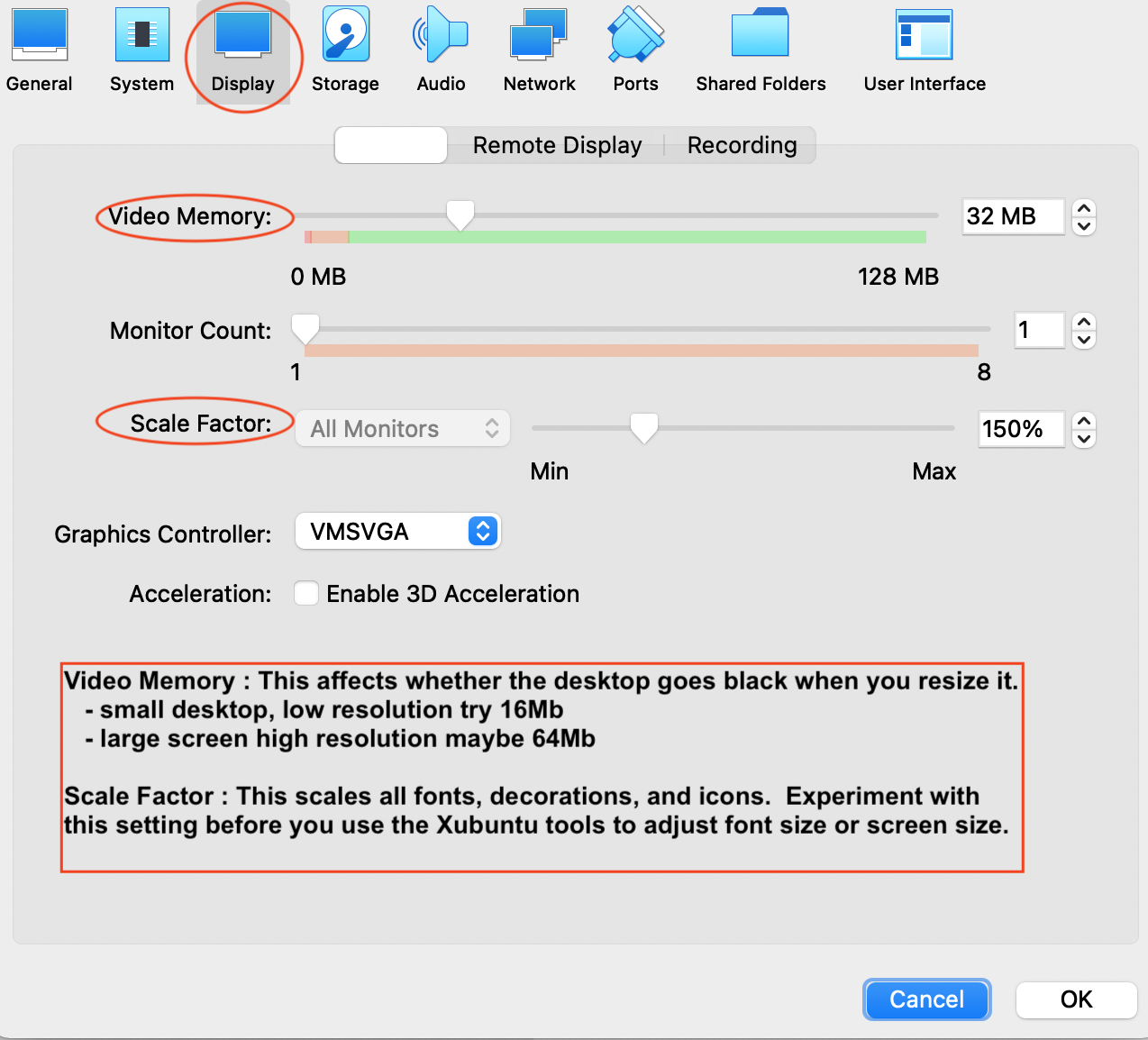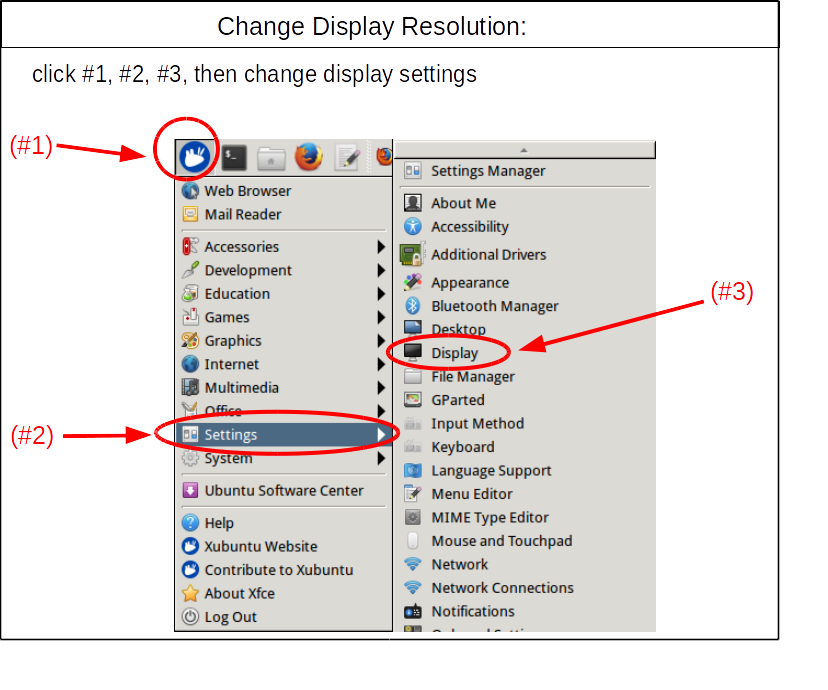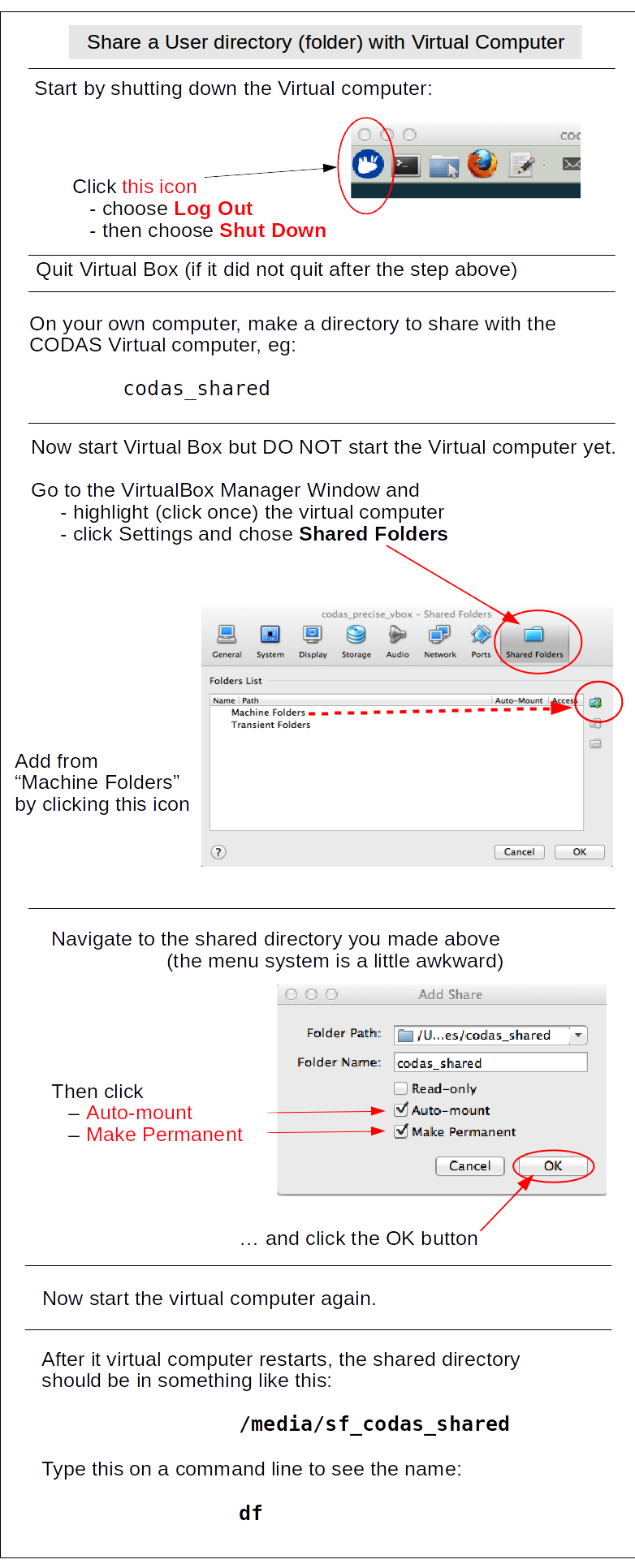Configuring the Virtual Computer¶
Note
If you are having problems getting the Virtual Computer to import, or have other strange warnings, jump to the next section to see some hints.
Install “Guest Additions”¶
It seems as if newer Virtual Box versions do not require that the Guest Additions be re-installed after importing. You can test this by resizing the window with the CODAS virtual computer in it. If the “desktop” of the virtual computer resizes as well, then Guest Additions are already installed. If the window resizes but the desktop inside it doesn’t change or doesn’t scale properly, the you’ll have to Google how to install the Guest Additions.
So it seems you can skip this step. Please let us know if that is not the case.
Adjust the video memory and Scale¶
You can adjust the “Scale” to change how big the fonts, decorations, and icons are on your display. In addition video memory may need to be increased to have a snappier response (and to keep it from going black if you increase the size). These are controlled in the Virtual Box Settings, in the Display tab.

Change screen resolution¶
Depending on your computer’s screen resolution and size you may want to change the virtual computer display settings.
Note
Don’t forget, you can adjust the entire scale of the fonts and other decorations by going to the Virtual Box “Settings” menu, and under Display, adjust the scale. Do that before adjusting the screen resolution.

Change Terminal font size¶
You may also want to change the font size for the Terminal. This is Gnome Terminal - choose Edit:Preferences and alter the settings for the profile of interest.
Note
Once you get everything working, then in general you should NOT upgrade anything (linux, CODAS programs, or Virtual Box) unless there is a good reason.
DO NOT upgrade Virtual Box if everything is working, although it will probably ask you every time you boot the virtual machine.
DO NOT upgrade the linux system to a newer version of the operating system. Many things are likely to break.
In general, DO NOT upgrade the CODAS processing code. There could be significant reorganization or changes which would be painful to adapt to. Instead, if there is some reason to upgrade the CODAS processing code, (for example if you found a bug) then you could try, but you might need to replace your virtual computer with another one. The virtual computer is designed to be used and then after some point, replaced rather than manually updated.
At this point, you should be able to test your CODAS virtual computer using these instructions.
If you want to see all the effort you saved during installation, or learn more about the components that go into installing CODAS software, browse to the next page.
Otherwise, assuming everything works, you can skip the other installation pages and move on to processing.
(Return to TOP)
